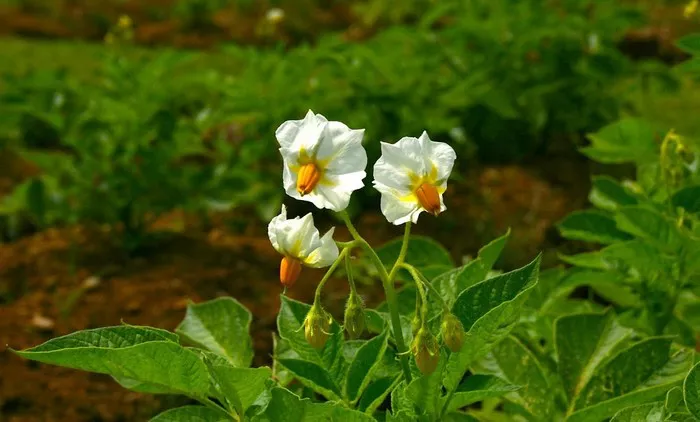Potatoes, often referred to as the world’s most important vegetable crop, are not only a staple in many diets but also a fascinating subject of agricultural study. Understanding the growth of potato plants is essential for farmers and researchers alike, as it directly impacts crop yield, quality, and overall agricultural practices. In this comprehensive article, we delve into the intricate process of how potato plants grow, from planting to harvest, uncovering the science behind their development and the factors influencing their growth.
Introduction to Potato Plant Growth
Potatoes (Solanum tuberosum) belong to the Solanaceae family and are grown for their starchy tubers, which serve as a valuable source of carbohydrates worldwide. The growth cycle of a potato plant can be divided into distinct stages, each characterized by specific physiological and morphological changes. Understanding these stages is crucial for optimizing agricultural practices and maximizing yields.
Stage 1: Seed Selection and Planting
The growth of a potato plant begins with the selection of high-quality seed potatoes. Seed potatoes are tubers saved from the previous harvest, specifically chosen for their disease resistance, vigor, and uniformity in size. Proper seed selection is paramount, as it directly influences the health and productivity of the subsequent crop.
Once selected, seed potatoes are planted in well-prepared soil. The planting depth varies depending on soil conditions and climate but generally ranges from 2 to 4 inches. Spacing between rows and plants is also critical to allow for adequate root development and optimal light exposure. Planting typically occurs in early spring when soil temperatures are conducive to germination.
Stage 2: Germination and Emergence
Following planting, the seed potatoes undergo a period of dormancy before sprouting. Soil temperature plays a significant role in initiating germination, with optimal temperatures ranging between 60 to 70°F (15 to 21°C). As soil moisture penetrates the seed, hormonal changes trigger the growth of sprouts or “eyes” from the potato tuber.
These sprouts eventually emerge from the soil surface, marking the beginning of the potato plant’s growth above ground. The emerging shoots exhibit positive phototropism, bending towards sources of light to maximize photosynthetic activity. During this stage, the potato plant focuses its energy on establishing a robust root system and developing foliage to capture sunlight for photosynthesis.
Stage 3: Vegetative Growth
With the onset of favorable growing conditions, the potato plant enters a phase of rapid vegetative growth. During this stage, the plant allocates resources towards leaf expansion, stem elongation, and root proliferation. The development of a dense leaf canopy is crucial for maximizing photosynthetic efficiency and ultimately tuber formation.
Under optimal conditions, potato plants can produce an abundance of foliage within a relatively short period. The leaves play a vital role in synthesizing carbohydrates through photosynthesis, which are then transported to developing tubers for storage and growth. Adequate water, nutrients, and sunlight are essential during this phase to sustain vigorous vegetative growth and ensure optimal crop development.
Stage 4: Flowering and Tuber Initiation
As the potato plant continues to grow, it transitions into the reproductive phase characterized by flowering and tuber initiation. Under long-day conditions, typically occurring in late spring or early summer, the plant produces clusters of white, pink, or purple flowers atop its foliage. These flowers are not only aesthetically pleasing but also serve as indicators of impending tuber formation.
Simultaneously, underground stolons originating from the lower stems begin to swell, giving rise to small, marble-sized tubers. Tuber initiation is influenced by various factors, including day length, temperature, and cultivar characteristics. Adequate soil moisture and nutrient availability are crucial during this stage to support tuber development and prevent physiological disorders such as misshapen or hollow tubers.
Stage 5: Tuber Bulking
Following tuber initiation, the potato plant enters a phase known as tuber bulking, during which the majority of tuber growth occurs. This stage typically coincides with the peak of summer when temperatures are warm, and daylight hours are long. The plant redirects carbohydrates synthesized during photosynthesis towards the developing tubers, fueling their expansion and accumulation of starch.
Optimal tuber bulking requires a delicate balance of water, nutrients, and environmental conditions. Excessive moisture or drought stress can hinder tuber growth and lead to quality issues such as cracking or rotting. Additionally, proper weed control and disease management are essential to mitigate potential yield losses during this critical stage of crop development.
Stage 6: Maturation and Harvest
As the growing season progresses, the potato plant reaches maturity, signaling the onset of senescence and dormancy. Foliage begins to yellow and wilt as the plant reallocates nutrients from above-ground tissues to the developing tubers. Tuber skins thicken and set, enhancing their storage potential and resistance to mechanical damage.
The timing of potato harvest is a crucial decision influenced by factors such as cultivar maturity, market demand, and weather conditions. Harvesting too early can result in underdeveloped tubers with lower yields, while delaying harvest increases the risk of tuber deterioration and storage losses. Mechanical harvesters or manual labor are employed to lift the tubers from the soil, followed by sorting, cleaning, and storage to ensure post-harvest quality.
Conclusion
The growth of potato plants is a complex and dynamic process influenced by various environmental, physiological, and agronomic factors. From seed selection to harvest, each stage of growth presents unique challenges and opportunities for farmers and researchers alike. By understanding the intricacies of potato plant growth, agricultural practitioners can implement informed strategies to optimize crop production, enhance yield and quality, and sustainably meet the global demand for this versatile and nutritious vegetable.


